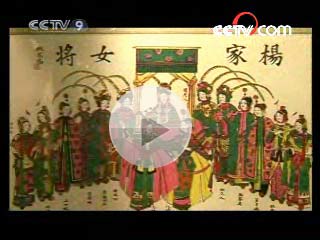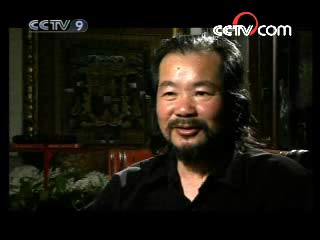------Program code: DO-080724-00901 (what's this?)
Source: CCTV.com
07-24-2008 08:45
One day in May 2003, the Gusu Evening News and several other newspapers reported that a volume called the Kunqu Opera Painting Collection was to be published.
 |
The Kunqu Opera Painting Collection includes 100 traditional Chinese paintings that feature many of the characters from Kunqu operas. The author of the collection is Pan Yuyu, president of the Suzhou Academy of Graphic Arts.
 |
Suzhou’s white walls and grey tiles, and water flowing beneath small bridges, are the embodiment of its rich culture. Many famous people, including a number of artists, were born in Suzhou. It was here also that the renowned contemporary artist, Pan Yuyu, gave birth to the Kunqu Opera Painting Collection.
Kunqu Opera, or Kunqiang, is reputed as the “father of all operas”. It is one of the most ancient forms of Chinese opera, dating back over 600 years. It originated in Suzhou, China.
Kunqu Opera, as a performing art, has various forms. It is characterized by delicate melodies and elegant gestures. It has had a major influence on many later operas, including Peking Opera, Yue Opera and Sichuan Opera.
Pan Yuyu was born in Suzhou in May 1944. The city, which was ruled by the Kingdom of Wu in ancient times, retains significant elements of Wu culture. As a fan of art since his childhood, Pan Yuyu has a special fondness for Kunqu Opera, as well as Peking Opera and Pingtan.
Pan Yuyu was admitted to the Suzhou Art & Design Technology College in 1959. Today, the college is the Suzhou Garden Museum.
According to historical records, the wisteria is 400 years old. It was planted by Wen Zhengming, a famous artist at the time of the Ming Dynasty.
It was under that wisteria more than 40 years ago that Pan Yuyu and his classmates took their painting classes. The wisteria was Pan’s earliest inspiration. Many of his works today still feature the big tree.
In 1962, Suzhou Art & Design Technology College was closed down, due to a lack of teachers. Pan Yuyu moved to the Central Academy of Art and Design, where he studied commercial art. It was while he was in Beijing that the Cultural Revolution broke out.
